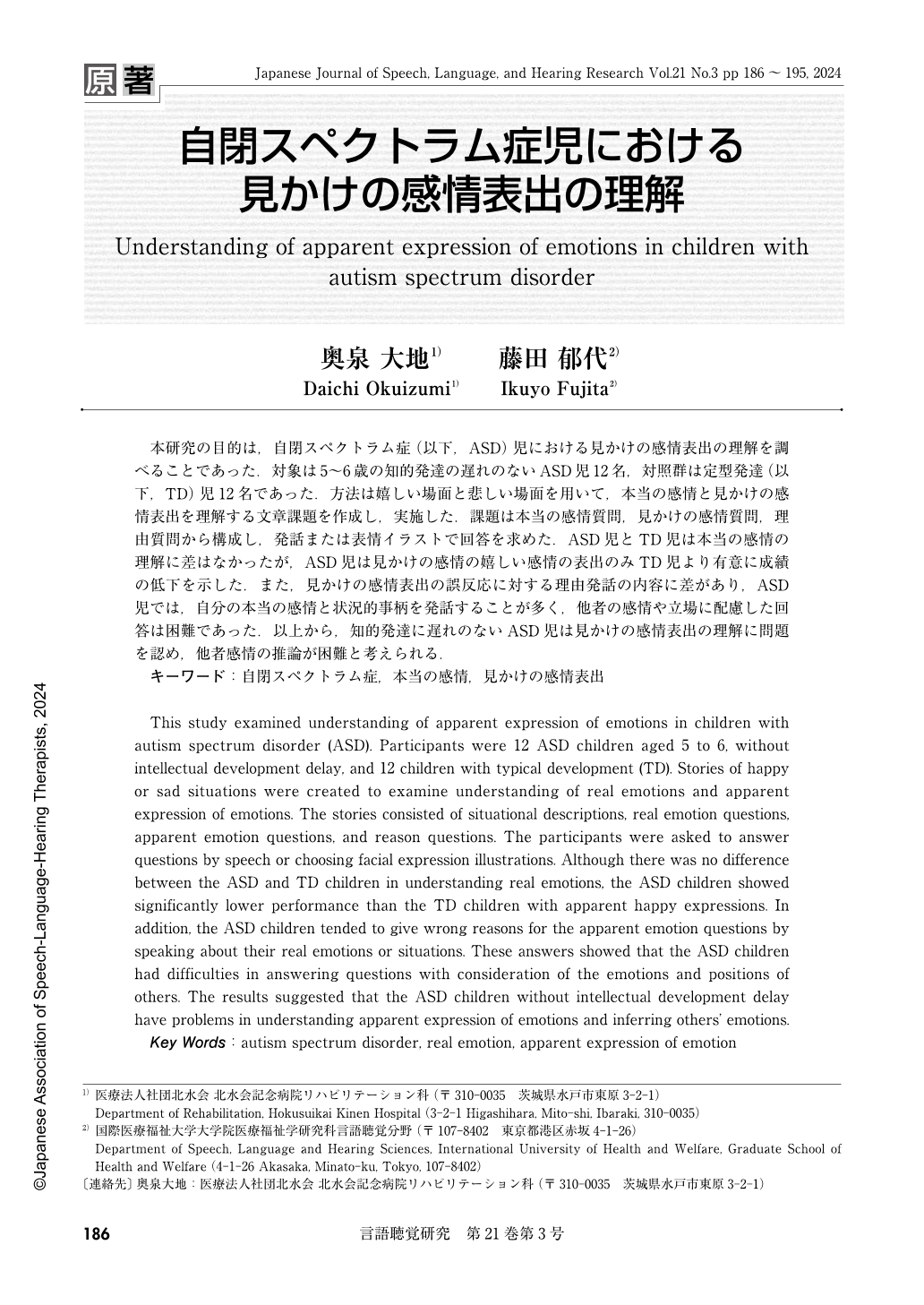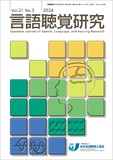Japanese
English
- 有料閲覧
- Abstract 文献概要
- 1ページ目 Look Inside
- 参考文献 Reference
本研究の目的は,自閉スペクトラム症(以下,ASD)児における見かけの感情表出の理解を調べることであった.対象は5〜6歳の知的発達の遅れのないASD児12名,対照群は定型発達(以下,TD)児12名であった.方法は嬉しい場面と悲しい場面を用いて,本当の感情と見かけの感情表出を理解する文章課題を作成し,実施した.課題は本当の感情質問,見かけの感情質問,理由質問から構成し,発話または表情イラストで回答を求めた.ASD児とTD児は本当の感情の理解に差はなかったが,ASD児は見かけの感情の嬉しい感情の表出のみTD児より有意に成績の低下を示した.また,見かけの感情表出の誤反応に対する理由発話の内容に差があり,ASD児では,自分の本当の感情と状況的事柄を発話することが多く,他者の感情や立場に配慮した回答は困難であった.以上から,知的発達に遅れのないASD児は見かけの感情表出の理解に問題を認め,他者感情の推論が困難と考えられる.
This study examined understanding of apparent expression of emotions in children with autism spectrum disorder (ASD). Participants were 12 ASD children aged 5 to 6, without intellectual development delay, and 12 children with typical development (TD). Stories of happy or sad situations were created to examine understanding of real emotions and apparent expression of emotions. The stories consisted of situational descriptions, real emotion questions, apparent emotion questions, and reason questions. The participants were asked to answer questions by speech or choosing facial expression illustrations. Although there was no difference between the ASD and TD children in understanding real emotions, the ASD children showed significantly lower performance than the TD children with apparent happy expressions. In addition, the ASD children tended to give wrong reasons for the apparent emotion questions by speaking about their real emotions or situations. These answers showed that the ASD children had difficulties in answering questions with consideration of the emotions and positions of others. The results suggested that the ASD children without intellectual development delay have problems in understanding apparent expression of emotions and inferring others' emotions.

Copyright © 2024, Japanese Association of Speech-Language-Hearing Therapists. All rights reserved.


